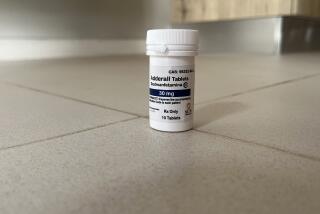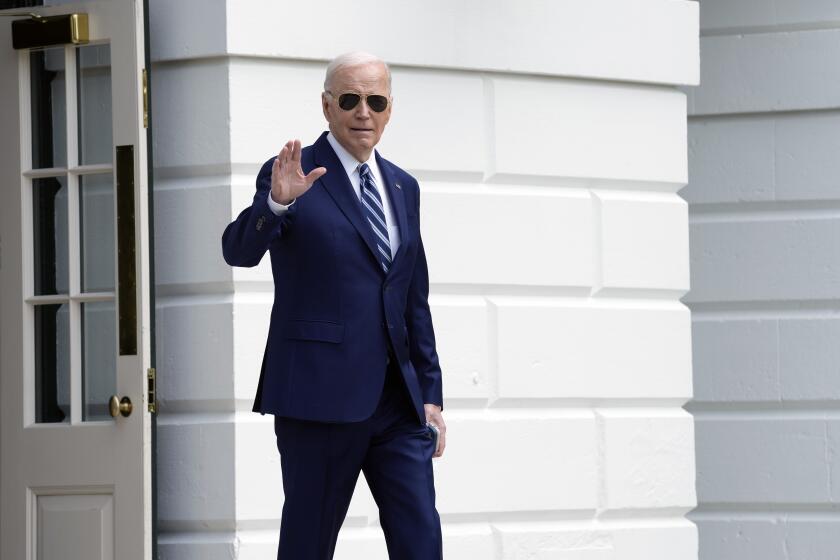19 Airstrips Found in ‘Cocaine Corridor’ : Drugs: Loads were flown from central Mexico to fields near Mexicali, then driven across the border. Some officials suspect corruption helped flights go undetected.
Mexican federal police have found 19 clandestine airstrips used by drug traffickers around the border city of Mexicali, a discovery that underscores the size and audacity of the drug smuggling industry in the deserts of the Imperial Valley, authorities said Wednesday.
The announcement is another sign of the region’s role as the hub of the Mexican “cocaine corridor” connecting Colombian cartels to the streets of Southern California, according to law enforcement officials. More than half of the cocaine that moves illicitly across the U.S.-Mexico border enters through the Imperial Valley, accounting for most of the cocaine that reaches Los Angeles.
“We do see a lot of activity in that area, in and out of various strips,” said Joe Maxwell of the U.S. Customs Service. Maxwell directs the Domestic Air Interdiction Coordination Center in Riverside, a facility that uses radar and government planes to combat smuggling by air.
Cocaine generally lands in central Mexico in large planes, such as converted 727s, out of reach of U.S. radar, Maxwell said. The loads of six to 10 tons are then transferred to trucks or small planes, which head north to staging areas near Mexicali and other Mexican border cities.
The dimensions of the secret landing strips, located mostly in the vast agricultural land of the valley south of Mexicali, suggest that they were used by light aircraft capable of carrying about 500 pounds of cocaine per flight, Maxwell said. Waiting smugglers then break down the loads again to be driven through the Calexico border crossing, primarily concealed in passenger cars.
The statement by federal police commanders in Mexicali, who told local newspapers that the air strips had received drug flights every two weeks, raised questions about how the smuggling could have thrived without detection. Although officials in the federal regional headquarters in Tijuana confirmed reports of the announcement, they had little information as to when and how the discoveries were made.
More fundamentally, the apparently intense activity at the airstrips suggests once again that cross-border corruption is a significant factor in the cocaine corridor, authorities said.
Asking how the air operations could have functioned undetected, a top U.S. law enforcement official, who asked not to be identified, said: “What have they been doing about it until now?”
Earlier this year, two U.S. border inspectors in Calexico were indicted on charges of conspiring with traffickers to wave tons of smuggled cocaine through the passenger port of entry; the probe of suspected widespread corruption in Calexico continues. And U.S. law enforcement officials, as well as some Mexican counterparts, assert that Mexican police are systematically involved in guarding and transporting U.S.-bound drugs in Baja California.
Recent cases support that contention. The arrest of former Mexican Deputy Atty. Gen. Mario Ruiz Massieu, who faces extradition proceedings in New Jersey, has revealed a far-reaching network of payoffs and protection of drug lords involving federal police in Baja and other major trafficking states.
The Mexicali announcement may result from political pressure on both sides of the border, as the new Administration of President Ernesto Zedillo advances a highly publicized anti-crime campaign.
Moreover, Pedro Raul Vidal Rosas, the attorney general of Baja California, has in recent months publicly discussed the complaints he has received from communities around Mexicali about the suspicious movement of aircraft using primitive rural runways. The state has no jurisdiction over drug crimes, but Vidal’s comments may have contributed to the action by federal authorities.
More to Read
Start your day right
Sign up for Essential California for news, features and recommendations from the L.A. Times and beyond in your inbox six days a week.
You may occasionally receive promotional content from the Los Angeles Times.






